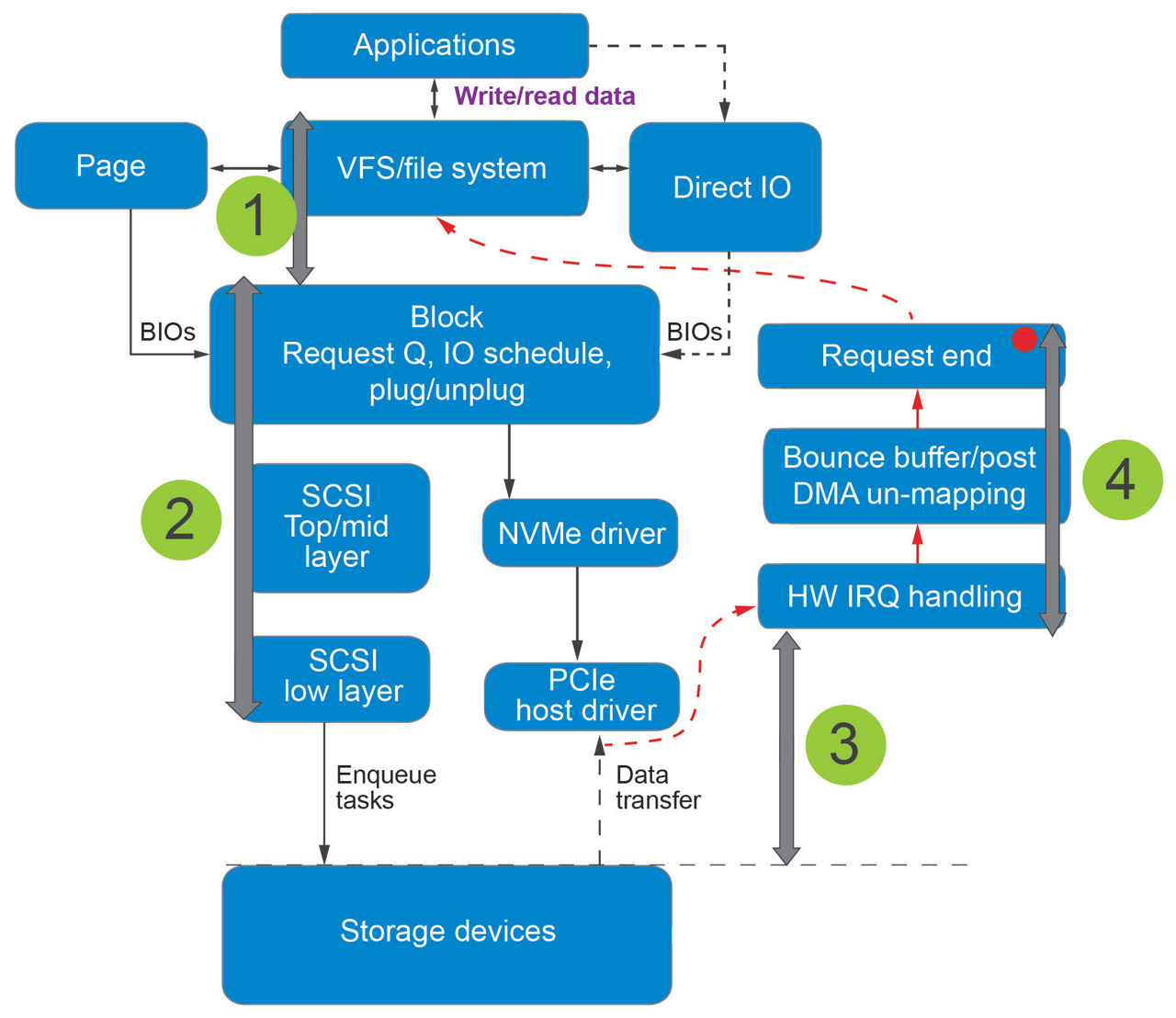
Embedded storage systems have experienced a rapid pace of innovation in the last couple of years. While eMMC has been a mainstream storage of choice for many embedded solutions, recently introduced storage technologies — such as UFS and NVMe — are offering great interface speeds that allow systems to make use of the underlying speed of NAND technologies.
In embedded systems, the storage software (SW) stack has a profound impact on user-level speeds. UFS and NVMe differ greatly in their storage SW stacks. The UFS storage stack builds on the SCSI stack, whereas NVMe has a storage stack designed specifically for managed NAND devices, one that has been significantly simplified compared to the SCSI stack to realize high storage speeds at the user level.
At Micron, we compare and quantify the differences between UFS and NVMe user-level storage performances. Our conclusion, based on measurements and estimation, show that due to the simpler storage SW stack, NVMe achieves 28% faster system-level speed in sequential writes and 15% faster speeds in sequential reads, and 30% higher IOPS in random writes and 16% higher IOPS in random reads. This inherent advantage of NVMe is expected to yield even greater benefits with faster storage devices.
Click here to read the complete white paper comparing UFS and NVMe storage stack and system-level performance in embedded systems.